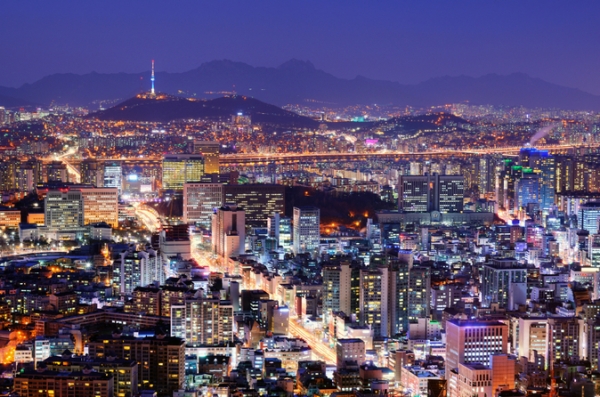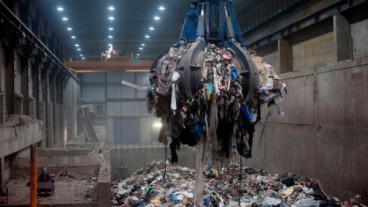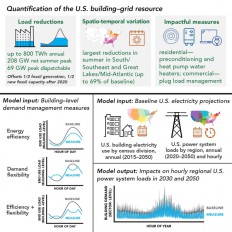Energy Hogs: Megacities with Largest Appetite for Resources

An international team of researchers led by engineers from the University of Toronto analyzed resource consumption data from the world’s twenty-seven largest cities. The survey, published this week, analyzed cities’ natural gas and electricity use, and waste disposal. Findings could be used to create strategies for making the worst offenders more sustainable.
An international team of researchers led by engineers from the University of Toronto analyzed resource consumption data from the world’s twenty-seven largest cities. The survey, published this week, analyzed cities’ natural gas and electricity use, and waste disposal. Findings could be used to create strategies for making the worst offenders more sustainable.
Since 1970, the number of megacities (population of 10 million) has grown from eight to twenty-seven in 2010 - that number is expected to jump to thirty-seven by 2020. These cities produce 12.6% of the world’s waste and consume 9.7% of its electricity despite housing only 6.7% of the world’s population. But not all megacities are created equal.
Wealth and geography are major indicators of a megacity’s greenness. Cities in colder climates tend to consume more fuel for heating and wealthier cities tend to consume and waste a disproportionate amount of just about everything. Some cities, though, have implemented policies to use fewer resources that have overcome cold climates or great wealth. Both New York and Tokyo have similar climates and wealth but not consumption. According to Chris Kennedy of the University of Toronto, “the New York metropolis has 12 million fewer people than Tokyo, yet it uses more energy in total: the equivalent of one oil supertanker every 1.5 days.” Tokyo’s policies for water conservation and efficient transportation give it an edge over cities like New York.
Other successful policies can be seen across the globe. London has increased taxes for waste disposal and prices for electricity. Seoul has implemented a water reuse system, and Moscow has built the largest shared heating system in the world.
The populations of megacities are rapidly growing; the growth in energy demand and GDP is growing even faster. For the developing world the combination of more people and more consumption per capita is putting an enormous strain on the planet’s resources. However, the study indicates that key policy decisions can make an incredible difference in the world’s resource usage.
Source: University of Toronto
Source: University of Toronto
Want to read more like this story?

Cities to live in to escape climate change
Nov, 11, 2016 | NewsA list of the most climate change-adaptive cities in North America A list of the most climate cha...

The 'urban heat island' effect could force several major cities to face climate change costs at least twice as big as the rest of the world
Oct, 10, 2017 | NewsSome of the world’s largest cities could face temperatures up to 8°C higher than those of...

March 22nd is World Water Day!
Mar, 22, 2015 | NewsSince 1993, the United Nations has designated March 22nd of each year as World Water Day, a day dedi...

Different urbanization patterns in large cities worldwide
Oct, 23, 2020 | NewsA new study reveals dissimilar urbanization patterns in large cities all over the world during the p...

Due to Sweden’s revolutionary recycling program, the country needs to import 800,000 tns of waste annually to feed its 32 waste-to-energy plants
Oct, 11, 2017 | NewsThe energy goes into a national heating network to heat homes throughout the winter and is also used...

Congestion pricing: A new strategy to alleviate traffic
Aug, 12, 2019 | NewsAccording to a new report issued by the National League of Cities (NLC), an advocacy organ...

New York City major to ban glass skyscrapers with high greenhouse emissions
Apr, 25, 2019 | NewsBill de Blasio, New York City major, has decided to ban the erection of energy inefficient glass sky...

Control building energy demand to preserve the electrical power resources
Jul, 07, 2021 | NewsA new study conducted in the United States quantifies how the optimization of the consumed energy in...

A Danish wastewater treatment plant produces more energy than it consumes
Jan, 26, 2017 | NewsMarselisborg WWTP has energy self-sufficiency above 100 % and the plant is in fact a power station...
Trending

Vertical gardens in Mexico City to combat pollution

Saudi Park Closed After 360 Big Pendulum Ride Crashes to Ground, 23 injured

Characteristics of Load Bearing Masonry Construction

Taipei 101’s impressive tuned mass damper

Dutch greenhouses have revolutionized modern farming

Federal court rules Biden’s offshore drilling ban unlawful


